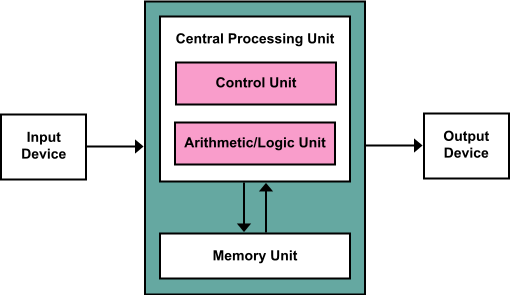Architecture of the central processing unit (CPU): Difference between revisions
Mr. MacKenty (talk | contribs) |
Mr. MacKenty (talk | contribs) |
||
| Line 12: | Line 12: | ||
== Major parts of a CPU == | == Major parts of a CPU == | ||
Below we see a diagram describing the overall architecture of a CPU. | |||
[[File:Cpu diagram.png]]<ref>https://en.wikibooks.org/wiki/IB/Group_4/Computer_Science/Computer_Organisation#von_Neumann_Architecture</ref> | [[File:Cpu diagram.png]]<ref>https://en.wikibooks.org/wiki/IB/Group_4/Computer_Science/Computer_Organisation#von_Neumann_Architecture</ref> | ||
Revision as of 04:33, 23 August 2016
This is an important concept. You should fully understand this.
A central processing unit (CPU) is the electronic circuitry within a computer that carries out the instructions of a computer program by performing the basic arithmetic, logical, control and input/output (I/O) operations specified by the instructions. [1]
Major parts of a CPU[edit]
Below we see a diagram describing the overall architecture of a CPU.
These videos are truly superb to help you understand parts of a CPU, and how they work.
Do you understand this topic?[edit]
- Describe the function of the ALU
- Describe the function of the control unit
- Describe the function of the program counter
- Describe the function of the clock
- Describe the function of an instruction
- Define instruction register
- What does a bus do?

